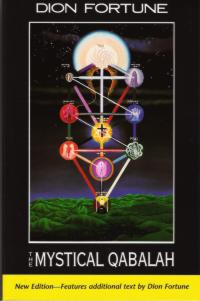Baksidestext
Dion Fortune's The Mystical Qabalah remains a classic in its clarity, linking the broad elements of Jewish traditional thought -- probably going back to the Babylonian Captivity and beyond -- with both Eastern and Western philosophy and later Christian insights. Dion Fortune was one of the first Adepts to bring this secret tradition to a wider audience. Some before her often only added to the overall mystery by elaborating on obscurity, but her account is simple, clear, and comprehensive.
The Qabalah could be described as a confidential Juadic explanation of the paradox of the Many and the One -- the complexity and diversity within a monothesitic unity. Whereas the Old Testament outlines the social and psychological development of a tightly knit chosen group culture, the supplementary Qabalah provides a detailed plan of the infrastructure behind the creative evolutionary process.
A major limitation of the Authorized English Version of the bible is the translation of the many Hebrew God-names by the single name, God. The Mystical Qabalah devotes a chapter to each of the ten schematic God-names, the qualities or Sephiroth, which focus the principle archetypes behind evolving human activity: the Spirital Source; the principles of Force and Form; Love and Justice; the Integrative principle of the Christ Force; Aesthetics and Logic; the dynamics of the Psyche; and finally, the Manifestation of lie on Earth in a physical body.
The Mystical Qabalah works in a profoundly psychological way. Its lessons for the individual are invluable and this book is a must for all who feel drawn to know themselves better so that their inner and outer worlds may be as one.
This revised edition includes an additional chapter of Fortune's original writing, an editorial update for the contemporary readers, and a foldout with Tree of Life diagrams to facilitate study of the text.
